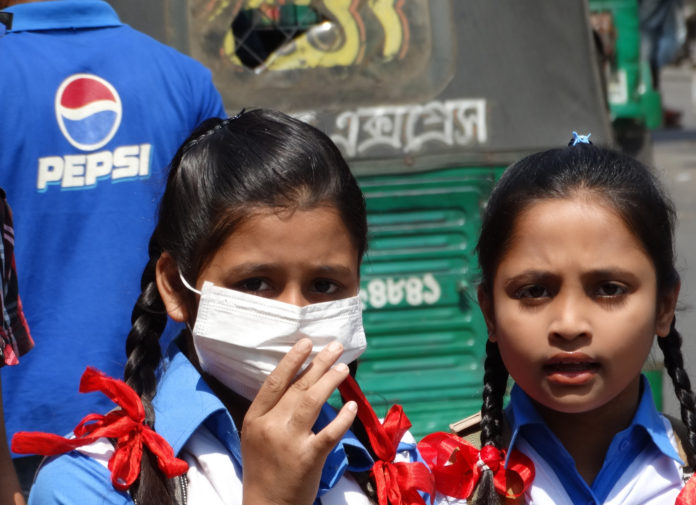The Global Burden of Disease report estimated that 1.1 million deaths in India were linked to PM 2.5 air pollution in 2015
Even the briefest increase in airborne fine particulate matter PM2.5 – very small pollution-causing particles – could lead to acute lower respiratory infection (ALRI) in young children. This is according to newly published study.
PM 2.5 are about 3 percent of the diameter of human hair. In India the annual PM2.5 limit is 40 microgram per metre cube. The daily cut off is 60 micrograms per metre cube. According to an article in the Journal of Thoracic Disease, “PM2.5 (particles less than 2.5 micrometers in diameter) can penetrate deeply into the lung, irritate and corrode the alveolar wall, and consequently impair lung function. Hence it is important to investigate the impact of PM2.5 on the respiratory system.”
The present groundbreaking study, is the largest to date on this health concern, involving more than 100,000 patients. The research was undertaken by a team from Intermountain Healthcare, Brigham Young University and University of Utah and has been published online in the American Journal of Respiratory and Critical Care medicine.
“The most important finding of this study is that infectious processes of respiratory disease may be influenced by particulate matter pollution at various levels,” said lead author Benjamin Horne, director of cardiovascular and genetic epidemiology at the Intermountain Medical Center Heart Institute in Salt Lake City, Utah.
Dr. Horne and colleagues studied 146,397 individuals who were treated for ALRI between 1999 and 2016 at Intermountain Healthcare facilities throughout Utah’s Wasatch Front region. The Wasatch Front is approximately 80 miles long and 10-20 miles wide, bordered on both sides by mountains. It consists primarily of suburbs, but also includes the cities of Salt Lake City, Ogden and Provo/Orem.
ALRI is associated with elevated levels of PM2.5 in both children and adults – even in newborns and toddlers up to age two, who represented 77 percent (112,467) of those who had an ALRI diagnosis
PM2.5 levels were estimated based on data from air quality monitoring stations along the Wasatch Front, where approximately 80 percent of Utah’s population resides. Measurements were also made at secondary locations. Short-term periods of PM2.5 elevation were matched with the timing of increases in health care visits for ALRI.
The primary aim of the study was to determine if there was an association between these fine particulates and ALRI in very young children, with a secondary objective of finding the same associations for older children, adolescents and adults.
The research team found ALRI is associated with elevated levels of PM2.5 in both children and adults – even in newborns and toddlers up to age two, who represented 77 percent (112,467) of those who had an ALRI diagnosis.
“In many places that have higher average PM2.5, the PM2.5 level does not vary as much as it does on the Wasatch Front, so it is not clear how this study’s findings may transfer to those locales where the air pollution exposure is higher over the long term but short term spikes do not occur,” said Dr. Horne.
Bronchiolitis, a condition in which small breathing tubes in the lungs called bronchioles become infected and clogged with mucus, is the most common acute lower respiratory infection in children.
Fifty to 90 percent of bronchiolitis cases are caused by respiratory syncytial virus (RSV), which is the most common cause of hospitalization in the first two years of life. Sixty-four percent of individuals studied had a diagnosis of bronchiolitis.



I¡¦ve recently started a blog, the info you provide on this site has helped me tremendously. Thanks for all of your time